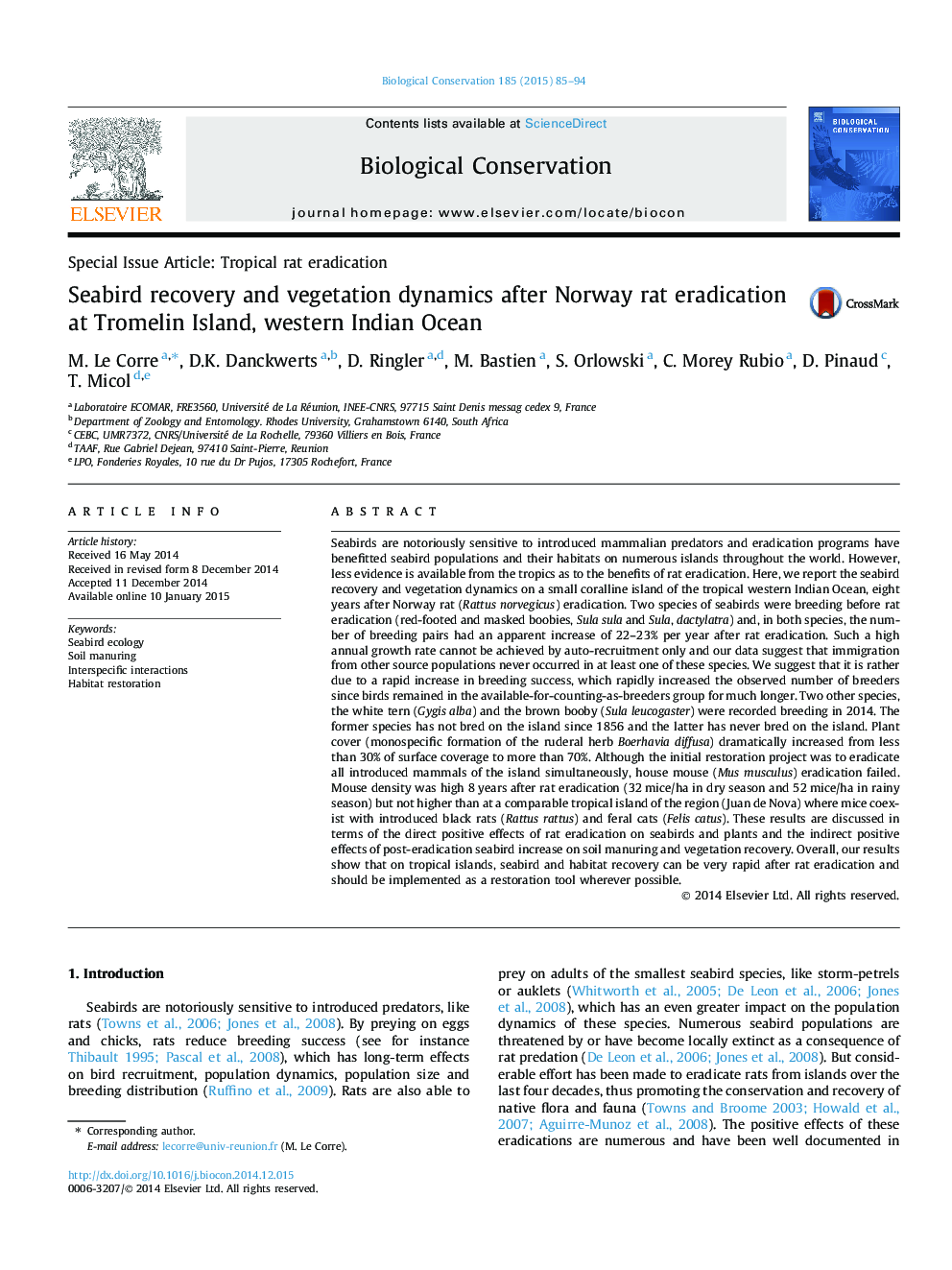| کد مقاله | کد نشریه | سال انتشار | مقاله انگلیسی | نسخه تمام متن |
|---|---|---|---|---|
| 6299183 | 1617916 | 2015 | 10 صفحه PDF | دانلود رایگان |
عنوان انگلیسی مقاله ISI
Seabird recovery and vegetation dynamics after Norway rat eradication at Tromelin Island, western Indian Ocean
ترجمه فارسی عنوان
بازیابی صید و رشد پوسته گیاهی پس از نابودی موش نروژ در جزیره ترولین، اقیانوس هند غربی
دانلود مقاله + سفارش ترجمه
دانلود مقاله ISI انگلیسی
رایگان برای ایرانیان
کلمات کلیدی
محیط زیست دریایی، تخمیر خاک، تعاملات متقابل، بازسازی محل نگهداری،
موضوعات مرتبط
علوم زیستی و بیوفناوری
علوم کشاورزی و بیولوژیک
بوم شناسی، تکامل، رفتار و سامانه شناسی
چکیده انگلیسی
Seabirds are notoriously sensitive to introduced mammalian predators and eradication programs have benefitted seabird populations and their habitats on numerous islands throughout the world. However, less evidence is available from the tropics as to the benefits of rat eradication. Here, we report the seabird recovery and vegetation dynamics on a small coralline island of the tropical western Indian Ocean, eight years after Norway rat (Rattus norvegicus) eradication. Two species of seabirds were breeding before rat eradication (red-footed and masked boobies, Sula sula and Sula, dactylatra) and, in both species, the number of breeding pairs had an apparent increase of 22-23% per year after rat eradication. Such a high annual growth rate cannot be achieved by auto-recruitment only and our data suggest that immigration from other source populations never occurred in at least one of these species. We suggest that it is rather due to a rapid increase in breeding success, which rapidly increased the observed number of breeders since birds remained in the available-for-counting-as-breeders group for much longer. Two other species, the white tern (Gygis alba) and the brown booby (Sula leucogaster) were recorded breeding in 2014. The former species has not bred on the island since 1856 and the latter has never bred on the island. Plant cover (monospecific formation of the ruderal herb Boerhavia diffusa) dramatically increased from less than 30% of surface coverage to more than 70%. Although the initial restoration project was to eradicate all introduced mammals of the island simultaneously, house mouse (Mus musculus) eradication failed. Mouse density was high 8Â years after rat eradication (32Â mice/ha in dry season and 52Â mice/ha in rainy season) but not higher than at a comparable tropical island of the region (Juan de Nova) where mice coexist with introduced black rats (Rattus rattus) and feral cats (Felis catus). These results are discussed in terms of the direct positive effects of rat eradication on seabirds and plants and the indirect positive effects of post-eradication seabird increase on soil manuring and vegetation recovery. Overall, our results show that on tropical islands, seabird and habitat recovery can be very rapid after rat eradication and should be implemented as a restoration tool wherever possible.
ناشر
Database: Elsevier - ScienceDirect (ساینس دایرکت)
Journal: Biological Conservation - Volume 185, May 2015, Pages 85-94
Journal: Biological Conservation - Volume 185, May 2015, Pages 85-94
نویسندگان
M. Le Corre, D.K. Danckwerts, D. Ringler, M. Bastien, S. Orlowski, C. Morey Rubio, D. Pinaud, T. Micol,
